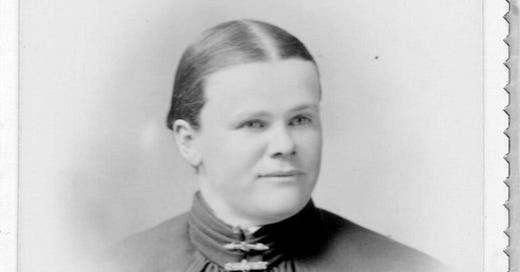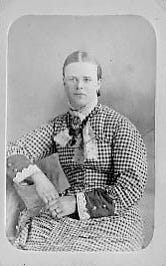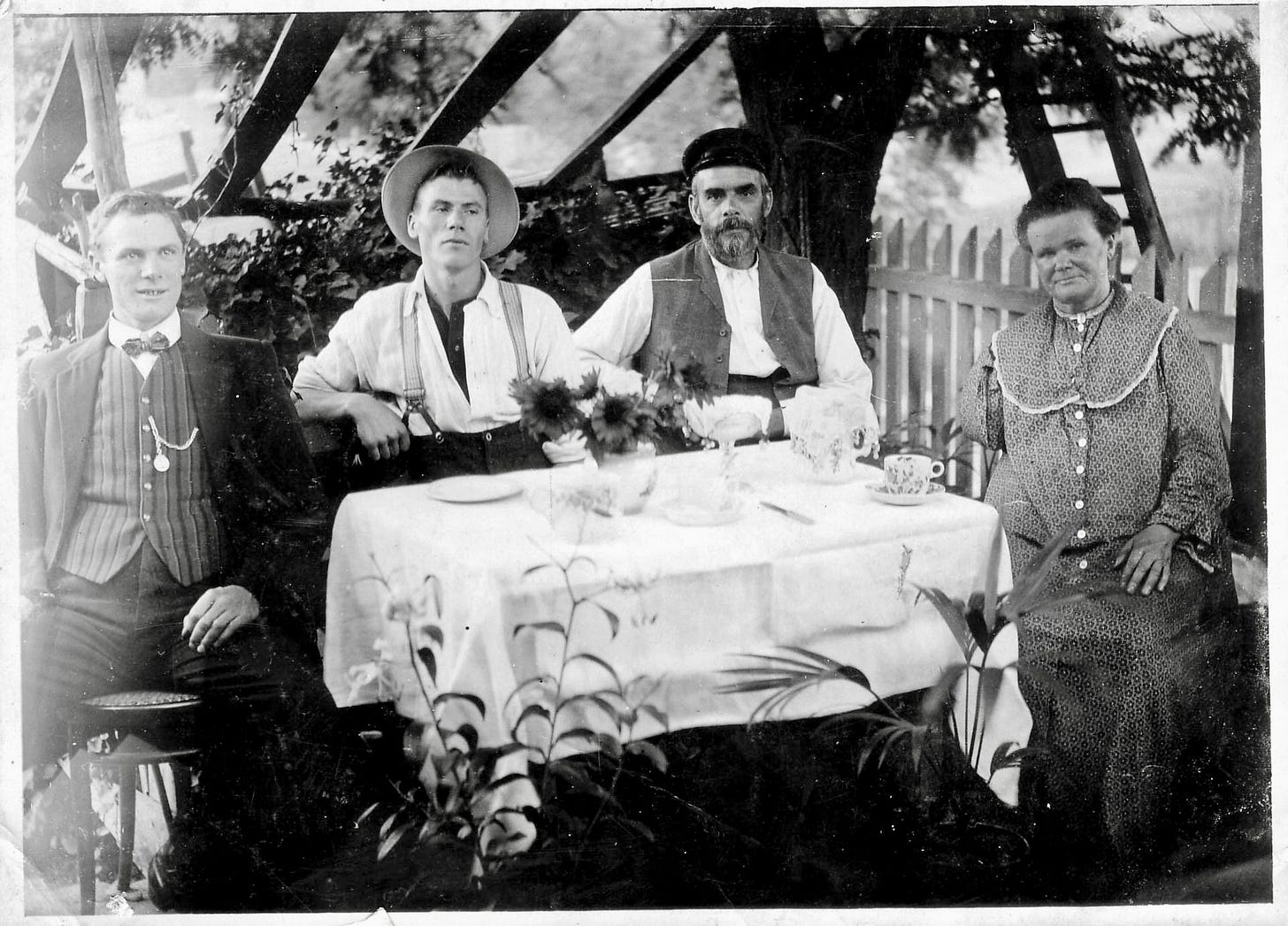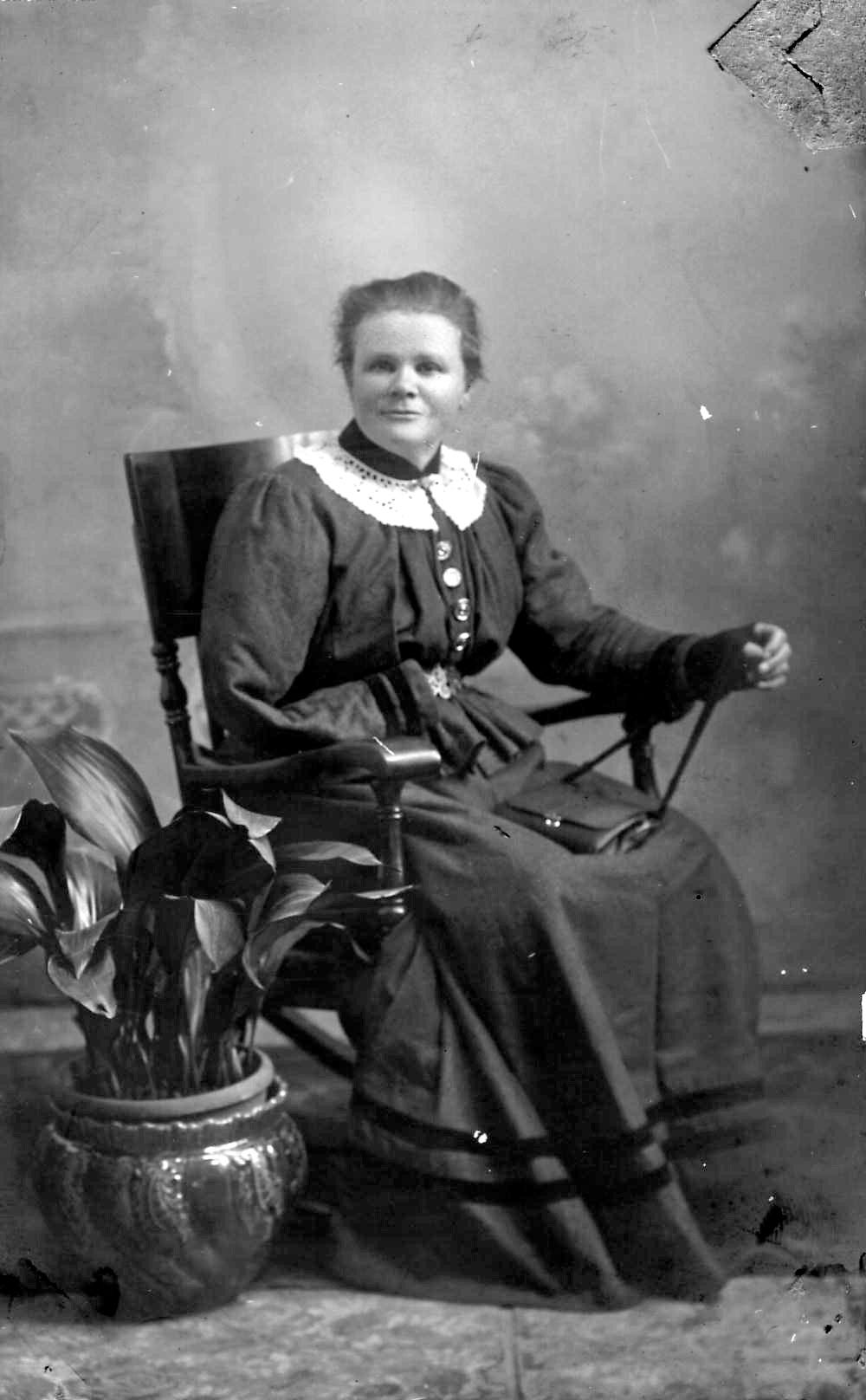Maryann Leake (nee Bampton)
This photo of my Great Grandmother, Mary Ann Leake (nee Bampton) must have been taken upon her marriage to my Great Grandfather, David Leake because I notice that she is wearing a shiny new wedding ring.I think that she and David must have lived near each other possibly in Shiffnal, Shropshire England, until David emigrated to the United States with his parents in 1871. Following the tragic death of his father in a mining accident in 1874, David returned to England where it is likely that he courted Mary Ann. At the age of 21, under the Assisted Migrant Scheme he sailed to Sydney Australia, arriving on “La Hogue” on 15 November 1877. David was a coal miner, and I think he initially took up employment in that industry at Greta near Cesnock. Three years later, Mary Ann joined David in Australia and they married on 15 January 1880 at the Wesleyan Parsonage, Prince Street in Sydney. Their marriage certificate noted that the 21year old Mary Ann had “just arrived from England”. The following year Mary Ann gave birth to their first son, Edwin, in ‘Hartley Vale’ near Lithgow. My grandfather, Arthur arrived in 1883 followed by two more children, a son John who died at the age of 1 and finally in 1893, their only daughter, Emma, who was named after Mary Ann’s own mother.The home that David built for Mary Ann in the Vale of Clwydd, Lithgow, was a small weatherboard construction, with a large coal burning oven in the kitchen where the family spent most of their time, two bedrooms and a formal dining/reception room. The laundry, with its coal fired copper was in a separate lime washed brick building, next to which was the outside privy. A creek ran along the side boundary of the yard and water was originally drawn from a well sunk into the front yard.
The couple must have felt nostalgic for their English landscape for they planted a poplar tree and several Hawthorne trees along the front picket fence as well as several Oak trees on the side. There are several photographs in the family album of David and Mary Ann enjoying a cup of tea while sitting beside a linen covered table, under one of the Hawthorne trees.
By that time, Mary Ann had lost her right arm. I was told as a young girl that a bottle of home made root beer (ginger beer?) exploded and cut her arm. The wound became gangrenous and her arm was amputated. The thought of undergoing that kind of surgery back then makes my blood run cold.
Mary Ann died during the Spanish Influenza epidemic on 23 September 1918. Her obituary, published in the Lithgow Mercury reported:
“By the death of Mrs David Leake, which took place about midday on Monday, Lithgow has lost another very old resident, who resided in the Vale of Clwydd for over 33 years. The deceased lady had not been in robust health for a considerable period, but although she took more seriously ill about a week ago, her end was unexpected. The late Mrs Leake was possessed of generous and religious impulses, and was a consistent member of the Salvation Army for quite 25 years. She was a kindly neighbour and many needy and sick will miss her attention. ….”
When I was young, I often stayed with my grandfather, Arthur Leake at the original family home. Although three more rooms had been added by then, we still spent most of our time sitting in the old original kitchen, still warmed by the coal oven that Mary Ann had used. I remember being bathed in front of the oven fire in an old metal tub filled with hot water poured from the huge black cast iron kettle that seemed to be permanently bubbling away on the oven. Another great memory is being allowed to sit on the old rocking chair in front of the fire, while toasting bread on an old fork fashioned from fencing wire.
Grandfather still used the old laundry. It was such a lovely warm place to shelter from the frosty snowy winter days that were common in the Vale. It was not such a great place to be in the height of the summer heat though. I am sure that washing day was a physically hard and long process for Mary Ann. The fire would have to be lit under the copper and the water fetched by the bucket full from the well. The clothes then would need to be scrubbed on an old washboard, before being plunged into the copper. Mary Ann would next have to lift the heavy wet washing out of the copper, using a wooden prop stick, and feed them through a hand operated mangle into the old stone sink of rinsing water next to the copper then back through the mangle again before hanging them out on the line strung between two poles and raised by a long wooden prop. I am very glad to have all the modern machinery in my laundry.






